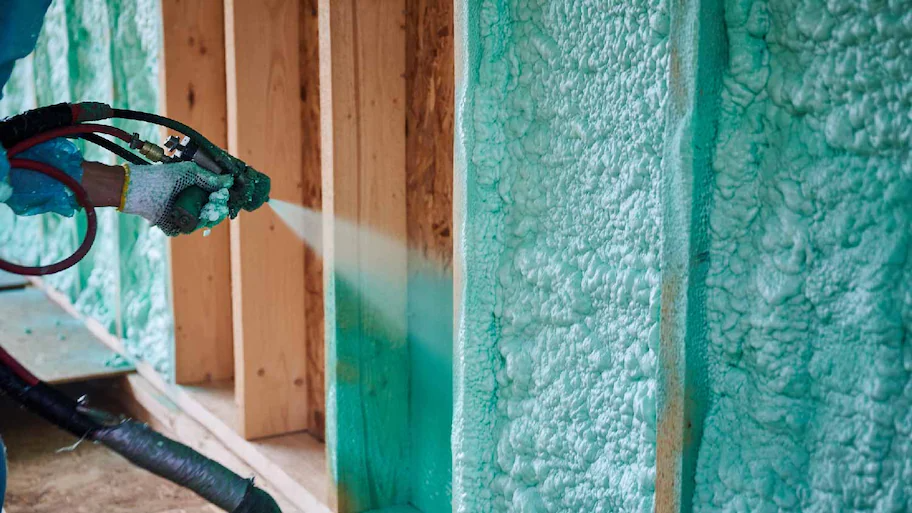
You’ve had spray foam insulation installed, and the performance speaks for itself energy efficiency, temperature control, sound dampening. But let’s be honest: it doesn’t exactly win any design awards. If you’ve ever stood in your garage, crawl space, or basement and thought, “This could look better,” you’re not alone. At D&D Insulation LLC, we hear this question all the time: Can you paint spray foam to make it look more aesthetic?
The short answer is yes and there’s a right way to do it. What follows is a complete guide based on our field-tested experience and hands-on expertise. Whether you’re finishing a home renovation or just want your exposed insulation to match the rest of the room, this guide gives you the practical know-how, real-world solutions, and professional insight to help you make the right choices.
The motivation behind painting spray foam often goes deeper than simple appearances. We’ve found that for homeowners and builders alike, it’s about completing the space in a way that feels intentional.
Garage ceilings, workshop walls, or unfinished basements may be fully insulated, but that raw yellow or white foam doesn’t blend with anything. Painting it allows you to coordinate colors, reduce visual clutter, and finish the space without major remodeling.
In areas exposed to sunlight like under metal roofs or near windows—open-cell and closed-cell spray foam can yellow or degrade over time. Applying the right paint adds a layer of protection and can extend the material’s appearance lifespan.
Different types of spray foam behave differently once cured. Our team at D&D Insulation LLC always assesses what’s installed before offering painting advice.
Closed-cell foam is dense, rigid, and more moisture-resistant. It holds paint well and provides a solid surface once cured. Open-cell foam is lighter, spongier, and more porous it can absorb paint unevenly unless properly prepared. Understanding what you have is the first step toward achieving a consistent, long-lasting finish.
Freshly installed spray foam needs time to off-gas and fully cure before paint is applied. We typically recommend waiting at least 24–72 hours depending on conditions. Uneven surfaces or overly thick applications may require additional prep work like light sanding or a primer coat.
This is where most DIY efforts go sideways. Proper surface prep determines how good your painted insulation will look and how long it will last.
Dust, oils, and moisture compromise adhesion. We start with a gentle vacuuming or dry-brush pass, followed by a wipe-down with a clean, dry cloth. In some cases, a mild degreaser may be used—always ensuring the foam stays dry before painting.
Not all spray foam needs a primer, but open-cell foam almost always benefits from it. We typically use a water-based acrylic primer that bonds well without making the foam too rigid or affecting its insulation value.
Here’s where a professional recommendation saves money and headaches. We’ve tested dozens of combinations, and not all paints deliver the same result.
We recommend water-based acrylic latex paints. They’re flexible, breathable, and adhere well to foam without cracking. Oil-based or solvent-heavy paints can degrade the foam or cause discoloration.
Flat and eggshell finishes tend to hide surface irregularities better, which is helpful given the natural texture of spray foam. High-gloss paints emphasize imperfections, so we generally steer clients away unless the foam is enclosed behind a smoother finish.
Painting over spray foam isn’t complex, but it comes with challenges. Our team anticipates and solves these issues before they cost you time or quality.
This typically happens when the foam isn’t sealed or primed correctly. Our approach: light sanding where needed, followed by an even primer coat. Then we test a small patch to check paint behavior before committing.
This usually traces back to applying the wrong paint or painting before the foam fully cures. Our crews allow ample drying time and always use materials we’ve tested in real-world jobs.
If you’re planning to paint spray foam insulation, it pays to do it right. That means correct timing, using the proper materials, and not cutting corners during prep. Here’s what we typically recommend.
Whether you’re working on a new build, retrofitting a garage, or finishing a workshop, our experienced team can prep and paint your spray foam as part of a broader insulation service—or as a standalone upgrade.
Not every application needs a cosmetic fix. But if the area will be visible to guests, used regularly, or tied into a larger design plan, painting becomes a worthwhile finishing step. We help our clients determine when it adds real value and when it’s just cosmetic.
Improving how your spray foam insulation looks doesn’t have to be complicated or risky. At D&D Insulation LLC, we help homeowners and builders throughout Texas get performance and presentation. From initial insulation to post-installation finishing, we’ve got the tools, products, and experience to do the job right.
Call us today at (903) 389-5705 or email us at [email protected] to schedule your consultation or request a quote.
Yes, but open-cell usually needs more prep and primer.
Acrylic latex water-based paints are ideal.
Typically 24–72 hours. It depends on the product and curing conditions.
Only if the surface is uneven or rough. Light sanding can help create a uniform finish.
Not if you use the right products. Avoid heavy solvent-based paints.
In many cases, yes especially open-cell foam.
It can damage the foam, cause peeling, or lead to uneven results.
Yes, we can prep and paint foam surfaces as part of our service package.
Absolutely. We work with custom colors for seamless integration.
Most jobs are completed in a day, depending on square footage and curing time.